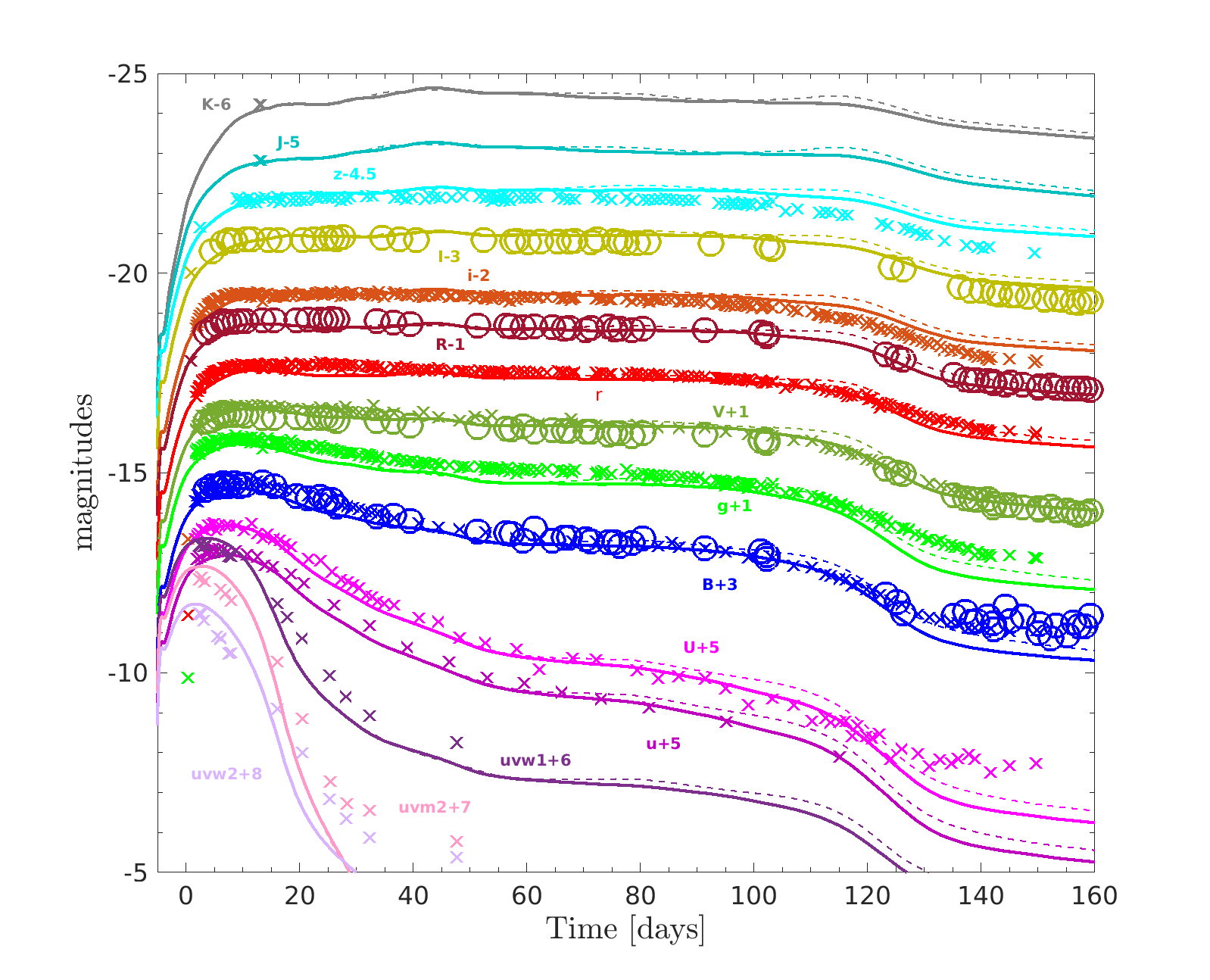

Kozyreva, A., Janka, Th., Kresse, D., Taubenberger, S., Baklanov, P. (2022)
MNRAS Volume 514, Issue 3, pp.4173-4189
arXiv eprint 2203.00473.
SN 2020cxd is a representative of the family of low-energy, underluminous Type IIP supernovae (SNe), whose observations and analysis were recently reported by Yang et al. (2021). Here we re-evaluate the observational data for the diagnostic SN properties by employing the hydrodynamic explosion model of a 9 M ⊙ red supergiant progenitor with an iron core and a pre- collapse mass of 8.75 M ⊙ . The explosion of the star was obtained by the neutrino-driven mechanism in a fully self-consistent simulation in three dimensions (3D). Multi-band light curves and photospheric velocities for the plateau phase are computed with the one-dimensional radiation-hydrodynamics code STELLA, applied to the spherically averaged 3D explosion model as well as spherisized radial profiles in different directions of the 3D model. We find that the overall evolution of the bolometric light curve, duration of the plateau phase, and basic properties of the multi-band emission can be well reproduced by our SN model with its explosion energy of only 0.7 × 10 50 erg and an ejecta mass of 7.4 M ⊙ . These values are considerably lower than the previously reported numbers, but they are compatible with those needed to explain the fundamental observational properties of the prototype low-luminosity SN 2005cs. Because of the good compatibility of our photospheric velocities with line velocities determined for SN 2005cs, we conclude that the line velocities of SN 2020cxd are probably overestimated by up to a factor of about 3. The evolution of the line velocities of SN 2005cs compared to photospheric velocities in different explosion directions might point to intrinsic asymmetries in the SN ejecta.
lbol:
(1) time [days] (2) log(L_ubvri) [erg/s] (3) log(L_bol) (4) logL(XEUV<325A) (5) logL(IR>890A)
tt:
(1) time [days] (2) Tbb [K] (3) Rbb [cm] (4) Teff [K] (7) Mbol (8) U (9) B (10) V (11) I (12)R
Kozyreva, A., Klencki J., Filippenko A., Baklanov, P., Mironov A., Justham S., Chiavassa A. (2022)
The Astrophysical Journal Letters, Volume 934, Issue 2, id.L31
|
The majority of Type II-plateau supernovae (SNe IIP) have light curves that are not compatible with the explosions of stars in a vacuum; instead, the light curves require the progenitors to be embedded in circumstellar matter (CSM). We report on the successful fitting of the well-observed SN IIP 2021yja as a core-collapse explosion of a massive star with an initial mass of ∼ 15 M ⊙ and a pre-explosion radius of 631 R ⊙ . To explain the early-time behaviour of the broad-band light curves, the presence of 0.55 M ⊙ CSM within ∼ 2 × 1014 cm is needed. Like many other SNe IIP, SN 2021yja exhibits an early-time flux excess including ultraviolet wavelengths. This, together with the short rise time (< 2 days) in the gri bands, indicates the presence of a compact component in the CSM, essentially adjacent to the progenitor. We discuss the origin of the pre-existing CSM, which is most likely a common property of highly convective red supergiant envelopes. We argue that the difficulty in fitting the entire light curve with one spherical distribution indicates that the CSM around the SN 2021yja progenitor was asymmetric.
- sharp lbol tt - shell lbol tt |

|